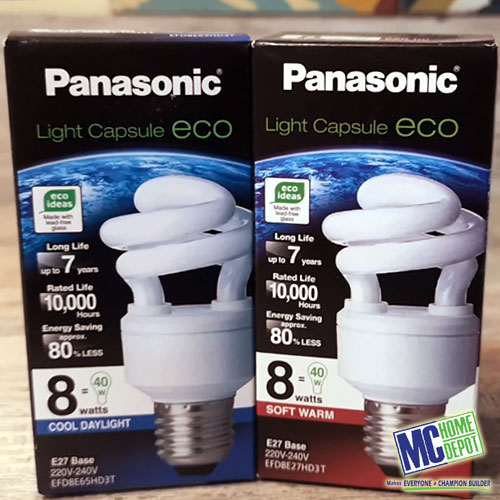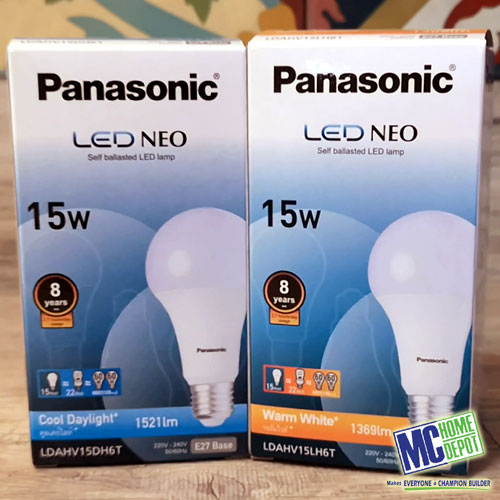Ever wonder what all the numbers on the side of a light bulb box means? It’s important to know these because understanding them will allow you to better choose the right light bulb for your lighting needs. Welcome to Part 1 of MC Home Depot’s Bulb Basics! Here we will talk about four Lightbulb Terminologies: Voltage; Watts; Lumens, and; Color Temperature:
Bulb Basics: Electricity:
We really cannot discuss the terms on a light bulb box without first defining Electricity. What is electricity? Electricity is the flow of free electrons between or within atoms. Electricity can either be Static – built in one place, as evidenced in lightning, or; free flowing, as seen in our electrical grid (Current). Currently – no pun intended – man has yet to harvest lightning for power, so we’ll focus on the Current kind of Electricity. Current technology requires the transformation of one type of energy say… mechanical energy in the form of a flowing river guided by a dam, into the energy required to spin a turbine which then turns a generator which creates electricity. Now if we were to liken Electricity to water, we would measure water volume in liters. We measure the volume of Electricity in Amperes.
Bulb Basics: Electricity:

The power of Static Electricity
In simple terms, Voltage is the pressure from an electrical circuit that pushes charged electrons though a conducting loop that powers the illumination of a light. We measure this in Volts. Think of Voltage as a river with the water being pushed through it as electricity. The volume of Electricity or Amperes, flows through conducting cables, or “rivers”. The pressure that causes the flow within these rivers is your Voltage. In the Philippines, the supply voltage is 220Voltz.
What are Watts?
Watt is the electrical unit for the rate at which energy is consumed. If Voltage is a river, Watts would be a watermill that scoops water out of the river. The higher the flow of the water, the faster the watermill turns.
Bulb Basics:Lumens
Lumens refers to the intensity of the light generated by the Watts that enters a lightbulb. In our analogy, the flowing river turns the watermill that scoops water out of the river the releases it in a shower. The strength of the “shower” is your lumens.

Voltage, Watts and Lumens simplified.
What is Color Temperature?
Light bulbs can be assigned colors of which there are three:
- Warm Light – a relaxing spectrum that helps set the mind to prepare to sleep.
- Cool White and Daylight are similar in the sense that they both range in the blue spectrum of light which helps one be more awake and productive.

Samples of Panasonic Lights with Color Temperatures

Samples of Panasonic Lights with Color Temperatures
In our river analogy, Color Temperature would be the temperature of the water in the shower. One is a nice warm relaxing shower; the other two are either lukewarm or cold showers that help wake you up and ready to face the day.


